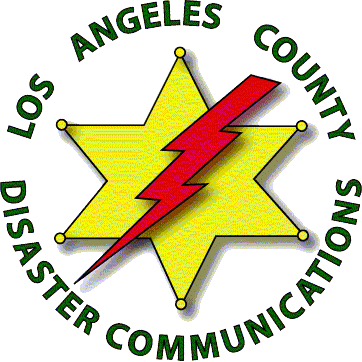
Disaster Communications Service
 |
Lomita Station – District 17 Disaster Communications Service |
Operating Tips
|
Tactical Calls and FCC Identification Tactical calls are efficient and convey functional or location information important during an operation. However the use of tactical calls does not excuse the operator from compliance with the FCC identification requirements [97.119]. The amateur call sign of each operator must be announced at the end of each contact and once every 10 minutes in the extremely rare event that a single contact is longer than 10 minutes. This can be done efficiently. For example:
Providing the FCC call sign in this manner complies with Part 97 and indicates that the exchange is complete and others can use the channel. |
||||||||||
|
Club Licenses and Individual Identification We use club station licenses for our club stations and the various city and county organizations, including RACES organizations. The ability to obtain appropriate vanity call signs also aids in identification of the organization. Examples are W6LMT, W6TPD, N6RPV, K6RPD, K1OES and even K6CPT. However club licenses do not convey operating privileges. This is especially important on HF (including our 10 meter frequencies), but is still relevant to our other nets. Therefore the operator should identify with his/her primary license call sign in addition to the organization’s club call sign when opening and closing a net and during periodic formal identifications. Again this can be done efficiently; example: This is W6LMT, net control station for the Los Angeles County Operational Area Disaster Communications Service, Lomita District. Net control operator is Tom 2, N5DQ. |
||||||||||
50W Limitation in the 440 band §97.313 Transmitter power standards. (f) No station may transmit with a transmitter power exceeding 50 W PEP on the UHF 70 cm band from an area specified in footnote US7 to §2.106 of the FCC Rules, unless expressly authorized by the FCC after mutual agreement, on a case-by-case basis, between the District Director of the applicable field facility and the military area frequency coordinator at the applicable military base. 47 CFR 2.106 Footnote US7 In the band 420-450 MHz and within the following areas, the peak envelope power output of a transmitter employed in the amateur service shall not exceed 50 watts, unless expressly authorized by the Commission after mutual agreement, on a case-by-case basis, between the Federal Communications Commission Engineer in Charge at the applicable district office and the military area frequency coordinator at the applicable military base. For areas (e) thru (j), the appropriate military coordinator is located at Peterson AFB, CO.
|